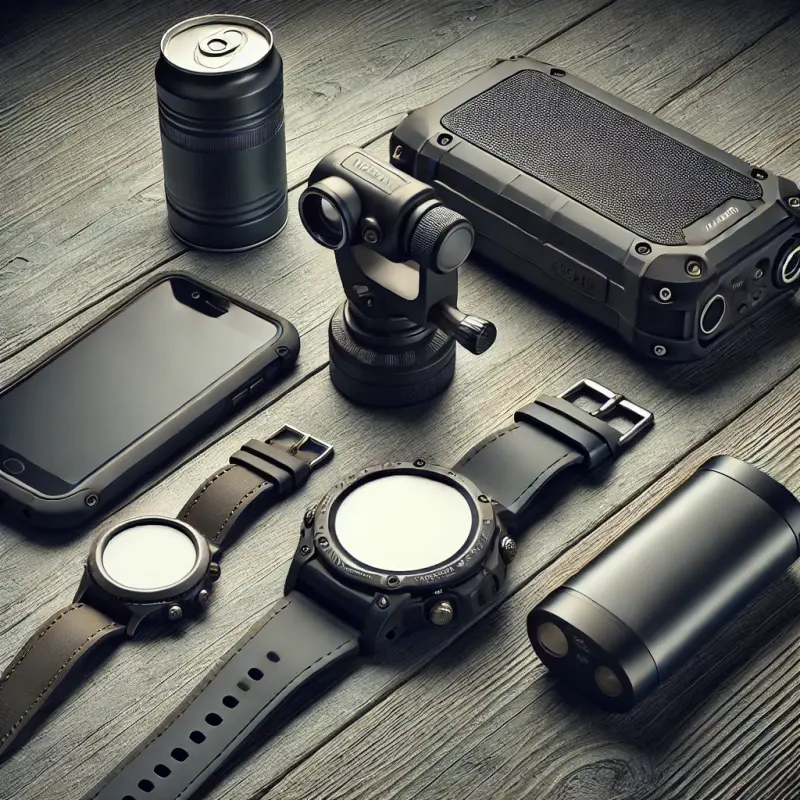Gadgets for Autonomous Mountain Travel: How Devices Assist in Navigation and Ensure Safety
Mountain adventures can be exhilarating, but they also require careful planning and the right gear to stay safe and oriented in challenging environments. Whether you're an experienced mountaineer or a weekend hiker, modern technology has made it easier to navigate treacherous landscapes and call for help if needed. In this article, we’ll explore essential gadgets for autonomous mountain travel and how they enhance both navigation and safety.

1. GPS Devices for Precise Navigation
The Backbone of Mountain Navigation
When venturing into remote areas, traditional maps and compasses can be lifesavers, but a robust GPS device takes navigation to the next level. These devices use satellite signals to provide precise, real-time location data, even in areas with no cellular coverage. Unlike smartphones, which can lose signal or battery life quickly in extreme conditions, dedicated GPS devices are built to withstand harsh weather and offer long-lasting performance.
Key Features to Consider:
- Durability: Look for devices that are water-resistant and built to handle impacts.
- Offline Maps: Make sure your GPS device allows you to download topographic maps for offline use.
- Battery Life: Extended battery life or options for external power sources can be crucial for longer trips.
By plotting your routes ahead of time and keeping an eye on your progress, you can avoid getting lost and conserve energy by choosing efficient paths.
2. Satellite Communicators for Emergency Contact
Staying Connected in Remote Areas
Satellite communicators have become essential for anyone exploring areas beyond the reach of mobile networks. These compact devices use global satellite networks to send and receive messages, even in the world's most remote locations. In emergencies, they can transmit distress signals to search and rescue teams, complete with your exact GPS coordinates.
Features That Matter:
- Two-Way Messaging: The ability to send and receive messages to loved ones or rescue services provides reassurance.
- SOS Functionality: An easy-to-activate SOS button that notifies emergency responders is a must-have feature.
- Weather Updates: Some satellite communicators also offer real-time weather forecasts to help you plan or adjust your route.
Using a satellite communicator adds a layer of safety and provides peace of mind, especially when venturing into isolated or potentially dangerous areas.
3. Smartwatches Tailored for Outdoor Adventurers
More Than Just Timekeeping
Smartwatches designed for outdoor adventures come equipped with features that go far beyond telling the time. Many of these devices include built-in GPS, altimeters, barometers, and heart rate monitors. They can track your altitude changes, provide weather warnings, and even guide you back to your starting point using a breadcrumb navigation feature.
Advantages of Hiking Smartwatches:
- Compact Design: Easily accessible on your wrist, allowing for hands-free use.
- Health Monitoring: Tracking your heart rate and exertion levels can help you manage your physical output and avoid overexertion.
- Customizable Maps: Some models allow you to load specific trail maps, giving you a detailed view of your route.
The versatility and convenience of smartwatches make them a favorite among hikers and mountaineers, especially those who want to keep track of their performance and environment.
4. Portable Power Banks for Keeping Devices Charged
Powering Your Adventure
With all these high-tech gadgets, keeping them powered can be a challenge, especially on multi-day treks. Portable power banks and solar chargers are practical solutions. High-capacity power banks can charge multiple devices, while solar panels offer a renewable energy source when you're out in the wilderness for extended periods.
What to Look for:
- High Capacity: A power bank with 20,000mAh or more can charge multiple devices multiple times.
- Solar Charging Options: Foldable solar panels are lightweight and can provide a continuous power source during daylight hours.
- Durability and Weather Resistance: Choose models that can endure the rugged outdoors.
Power banks ensure that your devices remain operational, from your GPS to your smartwatch, helping you stay connected and safe.
5. Combining Technology and Preparedness
While these gadgets greatly improve your ability to navigate and call for help, it’s important to remember that they should complement traditional survival skills, not replace them. Knowing how to use a map and compass, understanding weather patterns, and being prepared for sudden changes in conditions are essential skills for any mountain traveler.
6. Digital Maps and Preloaded Routes for Efficient Planning
Planning Your Route Before You Go
Many GPS devices, smartwatches, and even smartphones equipped with offline map apps now allow users to download digital maps and pre-plan routes. By marking key points along your path — such as water sources, potential camping spots, or challenging terrain sections — you can make real-time adjustments to your route. These digital maps are especially useful in unfamiliar territories, enabling you to explore with greater confidence and efficiency.
By combining the latest technology with proper planning and outdoor knowledge, you can make your mountain adventures both thrilling and secure.
Articles
Abonnez-vous à nos notifications pour ne rien manquer de nos dernières publications envoyées directement dans votre boîte de réception.